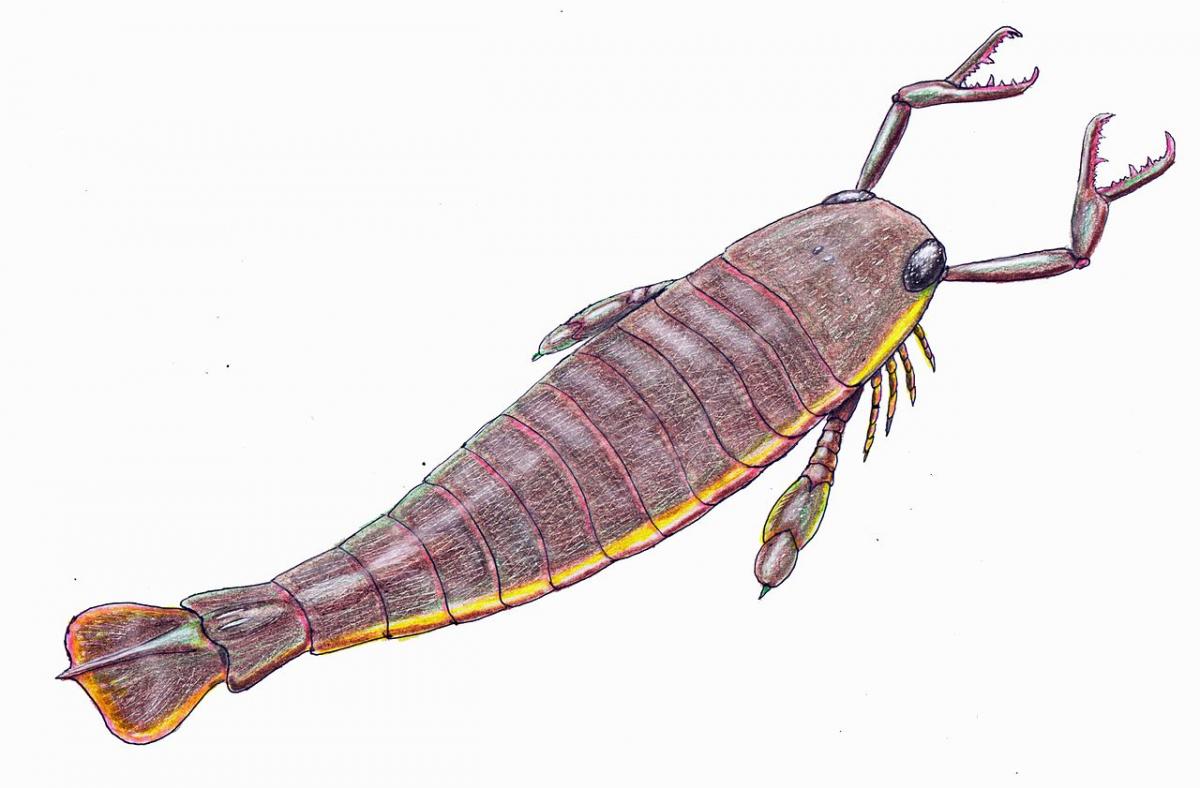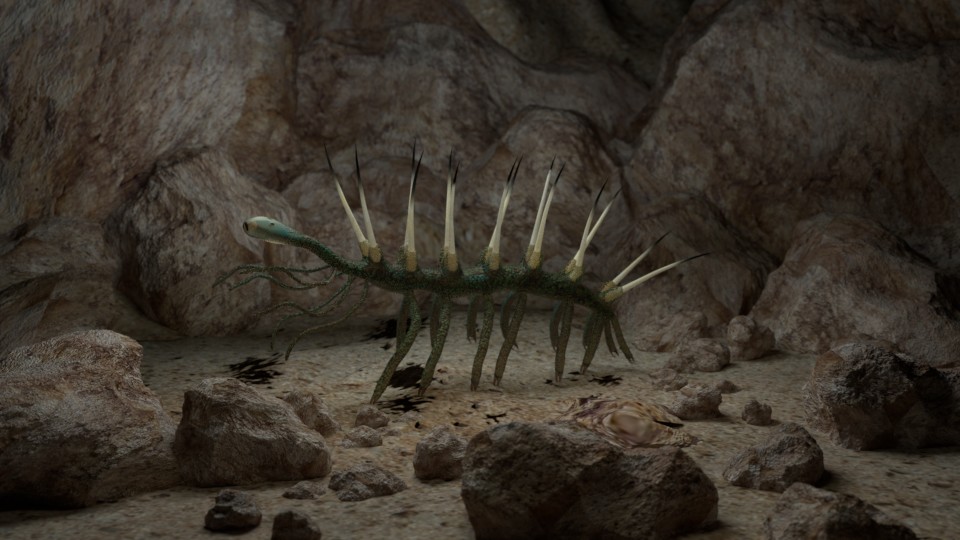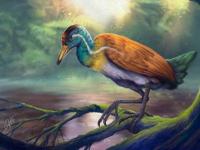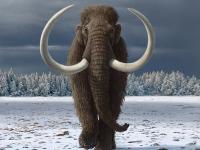23 Exceptional Prehistoric Creatures

Fearsome animals existed at the time of the dinosaurs that you, hardly, know about. Fortunately, they have gone extinct millions of years ago!
Below is a list of the 23 most deadliest prehistoric animals.
Dunkleosteus
Dunkleosteus is a genus of arthrodire placoderm fish that existed during the Late Devonian period, about 358–382 million years ago. The name Dunkleosteus combines the Greek osteus (οστεος), meaning "bone", and Dunkle, in honor of David Dunkle of the Cleveland Museum of Natural History. It consists of ten species: D. terrelli, D. belgicus, D. denisoni, D. marsaisi, D. magnificus, D. missouriensis, D. newberryi, D. amblyodoratus, and D. raveri; some of which are among the largest placoderms to have ever lived. The largest species, D. terrelli, grew up to 6 m (19.7 ft) long and 1 t (1.1 short tons) in weight. Few other placoderms rivaled Dunkleosteusin size. Dunkleosteus could quickly open and close its jaw, like modern day suction feeders, and had a bite force of 6,000 to 7,400 N (1,350 to 1,660 lbf).
Archaeopteryx

Archaeopteryx meaning "old wing", is a genus of bird-like dinosaurs that is transitional between non-avian feathered dinosaurs and modern birds. The name derives from the ancient Greek ἀρχαῖος (archaīos) meaning "ancient", and πτέρυξ (ptéryx), meaning "feather" or "wing". Between the late nineteenth century and the early twenty-first century, Archaeopteryx had been generally accepted by palaeontologists and popular reference books as the oldest known bird (member of the group Avialae). Older potential avialans have since been identified, including Anchiornis, Xiaotingia, and Aurornis.
Elasmosaurus
Elasmosaurus is a genus of plesiosaur that lived in North America during the Campanian stage of the Late Cretaceous period, about 80.5 million years ago. The first specimen was discovered in 1867 near Fort Wallace, Kansas, and was sent to the American paleontologist Edward Drinker Cope, who named it E. platyurus in 1868. The generic name means "thin-plate reptile", and the specific name means "flat-tailed". Cope originally reconstructed the skeleton of Elasmosaurus with the skull at the end of the tail, an error which was made light of by the paleontologist Othniel Charles Marsh, and became part of their "Bone Wars" rivalry. Only one incomplete Elasmosaurus skeleton is definitely known, consisting of a fragmentary skull, the spine, and the pectoral and pelvic girdles, and a single species is recognized today; other species are now considered invalid or have been moved to other genera.
Deinotherium
Deinotherium ("terrible beast") was a large prehistoric relative of modern-day elephants that appeared in the Middle Miocene and survived until the Early Pleistocene. During that time it changed very little. In life, it probably resembled modern elephants, except it had downward curving tusks attached to the lower jaw.
Opabinia
Opabinia regalis is a stem group arthropod found in the Middle Cambrian Burgess Shale Lagerstätte of British Columbia, Canada. Fewer than twenty good specimens have been described; 3 specimens of Opabinia are known from the Greater Phyllopod bed, where they constitute less than 0.1% of the community. Opabinia was a soft-bodied animal, averaging about 5.7 cm in length (excluding proboscis), and its segmented body had lobes along the sides and a fan-shaped tail. The head shows unusual features: five eyes, a mouth under the head and facing backwards, and a proboscis that probably passed food to the mouth. Opabinia probably lived on the seafloor, using the proboscis to seek out small, soft food.
Helicoprion
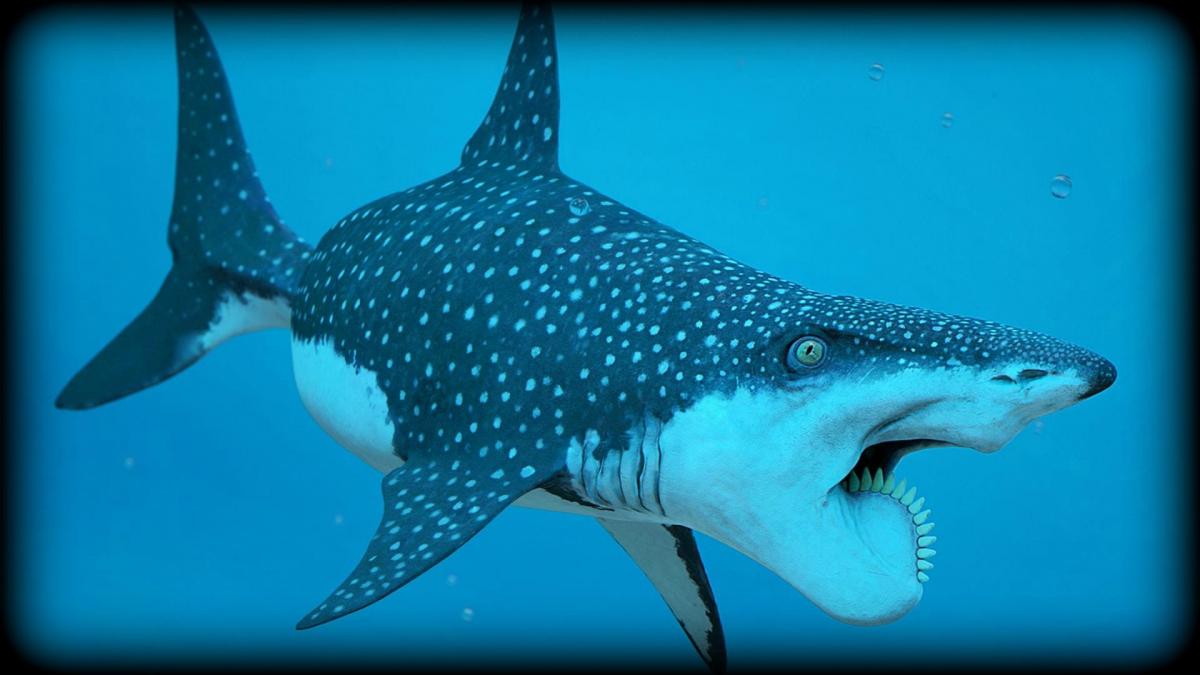
Helicoprion is a long-lived genus of shark-like eugeneodontid holocephalid fish. Almost all fossil specimens are of spirally arranged clusters of the individuals' teeth, called "tooth whorls"— the cartilaginous skull, spine, and other structural elements have not been preserved in the fossil record, leaving scientists to make educated guesses as to its anatomy and behavior. Helicoprion lived in the oceans of the early Permian 290 million years ago, with species known from North America, Eastern Europe, Asia, and Australia. The closest living relatives of Helicoprion (and other eugeneodontids) are the chimaeras.
Quetzalcoatlus
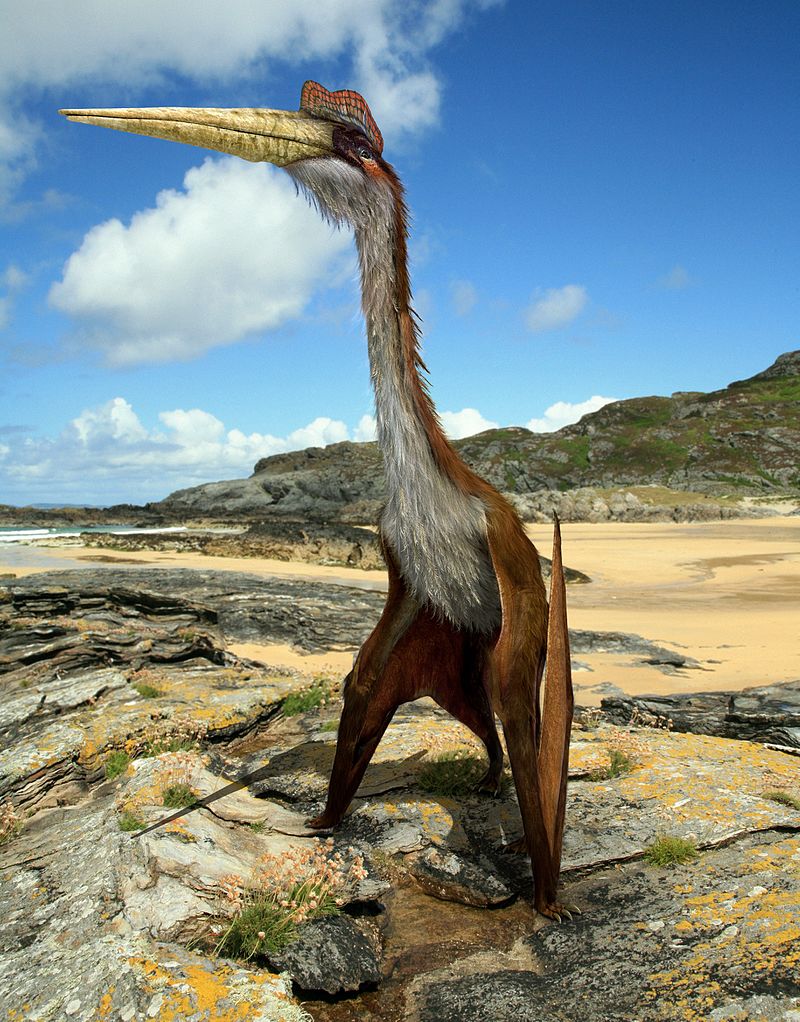
Quetzalcoatlus northropi is an azhdarchid pterosaur known from the Late Cretaceous of North America (Maastrichtian stage) and one of the largest known flying animals of all time. It is a member of the family Azhdarchidae, a family of advanced toothless pterosaurs with unusually long, stiffened necks. Its name comes from the Mesoamerican feathered serpent god, Quetzalcoatl.
Dimorphodon
Dimorphodon was a genus of medium-sized pterosaur from the early Jurassic Period. It was named by paleontologist Richard Owen in 1859. Dimorphodon means "two-form tooth", derived from the Greek δι (di) meaning "two", μορφη (morphe) meaning "shape" and οδων (odon) meaning "tooth", referring to the fact that it had two distinct types of teeth in its jaws – which is comparatively rare among reptiles.
Jaekelopterus
Jaekelopterus is a genus of giant predatory eurypterid, an extinct group of aquatic arthropods. Fossils of Jaekelopterus have been discovered in deposits of Early Devonian age, from the Pragian and Emsian stages, and have been referred to two known species, the type species J. rhenaniae from freshwater strata in the Rhineland and J. howelli from estuarine strata in Wyoming. The generic name is composed of a patronym honouring German paleontologist Otto Jaekel, who described the type species, and the Greek word πτερόν (pteron) meaning "wing".
Based on the isolated fossil remains of a large chelicera (claw) from the Klerf Formation of Germany, J. rhenaniae has been estimated to have reached a size of around 2.3–2.6 metres (7.5–8.5 ft), average 2.5 metres (8.2 ft), which would make Jaekelopterus the largest known arthropod ever discovered, surpassing other large arthropods such as fellow giant eurypterids Acutiramus and Pterygotus and the giant millipede Arthropleura.
Hallucigenia
Hallucigenia is a genus of Cambrian xenusiids known from articulated fossils in Burgess Shale-type deposits in Canada and China, and from isolated spines around the world. The generic name reflects the type species' unusual appearance and eccentric history of study; when it was erected as a genus, H. sparsa was reconstructed upside down and back to front. Hallucigenia is now recognized as a "lobopodian worm". It is considered by some to represent an early ancestor of the living velvet worms, although other researchers favour a relationship closer to arthropods.
Hallucigenia had seven tipped tweezers in the tentacles on each side of his body, then three pairs of tentacles behind the first. Some of these tentacles were paired with thorns.
Liopleurodon
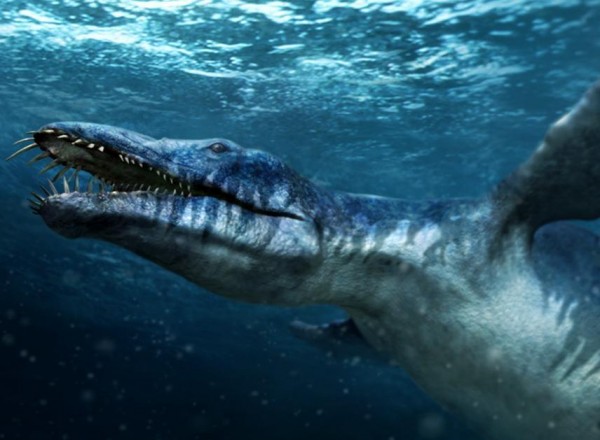
Liopleurodon is a genus of large, carnivorous marine reptile belonging to the Pliosauroidea, a clade of short-necked plesiosaurs. The two species of Liopleurodon lived during the Callovian stage of the Middle Jurassic Period (c. 160 to 155 mya). It was the apex predator of the Middle to Late Jurassic seas that covered Europe. The largest species, L. ferox, is estimated to have grown up to 7.50 metres (24.6 ft) in length.
Therizinosaurus
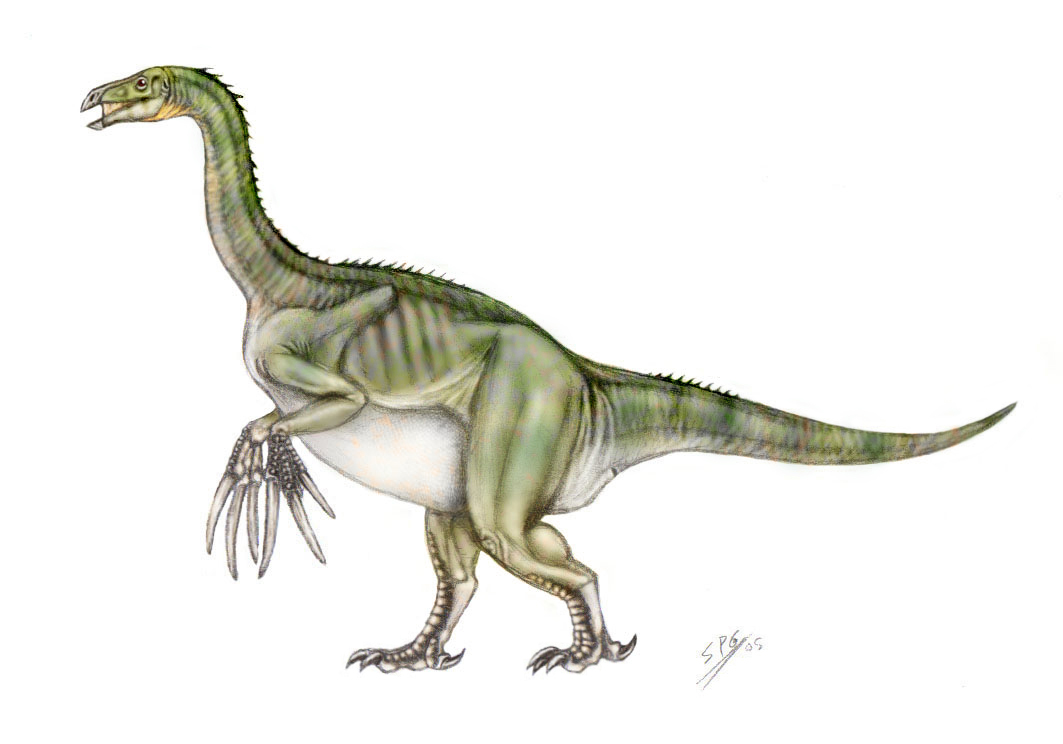
Therizinosaurus is a genus of very large theropod dinosaurs. Therizinosaurus comprises the single species T. cheloniformis, which lived in the late Cretaceous Period (late Campanian-early Maastrichtian stages, around 70 million years ago), and was one of the last and largest representatives of its unique group, the Therizinosauria. Fossils of this species were first discovered in Mongolia and were originally thought to belong to a turtle-like reptile (hence the species name, T. cheloniformis – "turtle-formed"). It is known only from a few bones, including gigantic hand claws, from which it gets its name.
Megalania
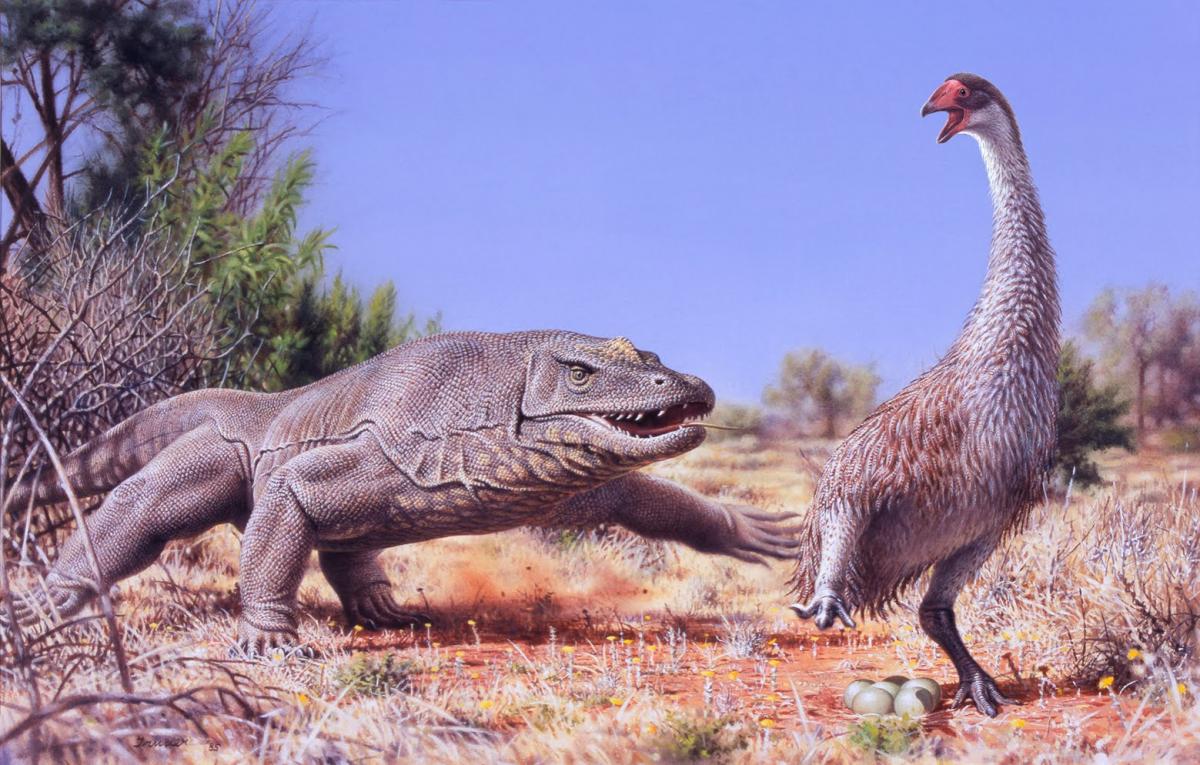
Megalania (Megalania prisca or Varanus priscus) is a giant goanna or monitor lizard. They were part of a megafaunal assemblage that inhabited southern Australia during the Pleistocene. The youngest fossil remains date to around 50,000 years ago. The first aboriginal settlers of Australia might have encountered them and been a factor in their extinction.
Argentavis

Argentavis magnificens ("magnificent Argentine bird", or more literally "magnificent silver bird") was among the largest flying birds ever to exist, quite possibly surpassed in wingspan only by the recently discovered Pelagornis sandersi. A. magnificens, sometimes called the giant teratorn, is an extinct species known from three sites in the Epecuén and Andalhuala Formations in central and northwestern Argentina dating to the Late Miocene (Huayquerian), where a good sample of fossils have been obtained.
Sea Scorpions
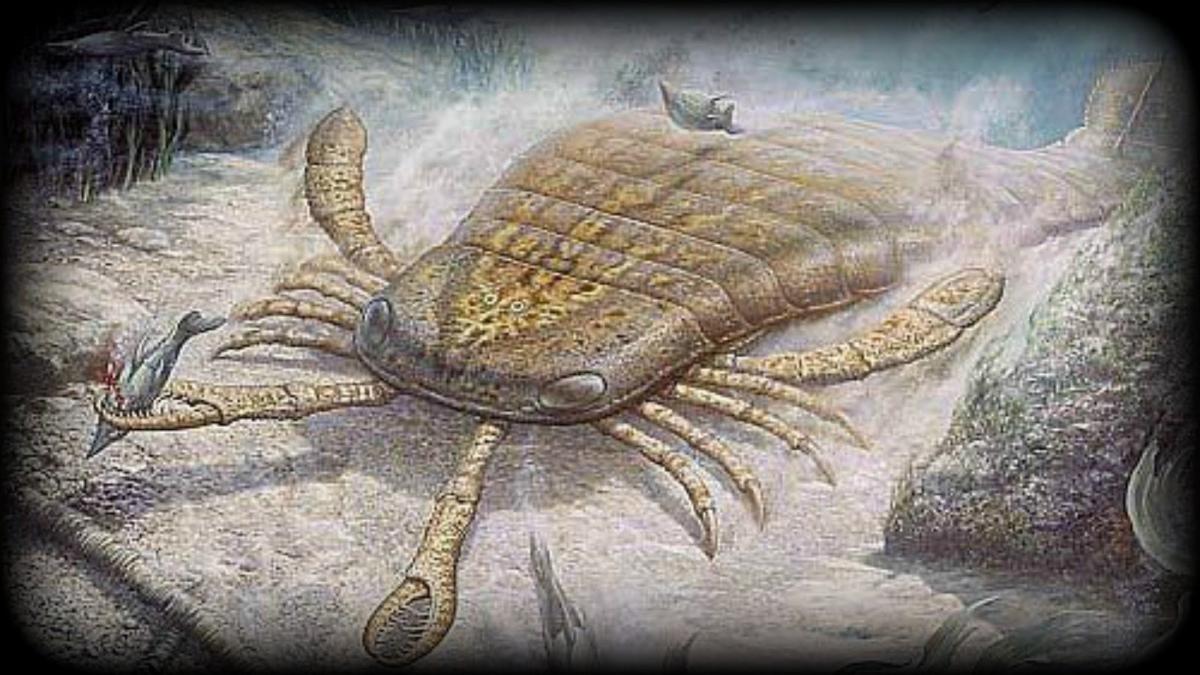
Eurypterids, often informally called sea scorpions, are a group of arthropods related to arachnids that include the largest known arthropods to have ever lived. They are members of the extinct order Eurypterida (Chelicerata); which is the most diverse Paleozoic chelicerate order in terms of species. The name Eurypterida comes from the Greek words eury- (meaning "broad" or "wide") and pteron (meaning "wing"). This name was chosen due to the pair of wide swimming appendages, reminiscent of wings, on the first fossil eurypterids discovered. The largest, such as Jaekelopterus, reached 2.5 metres (8 ft 2 in) in length, but most species were less than 20 centimetres (8 in). They were formidable predators that thrived in warm shallow water, in both seas and lakes, from the mid Ordovician to late Permian (467.3 to 252 million years ago).
Madtsoia

Madtsoia is a genus of madtsoiid snakes. It is known from the Eocene (Casamayoran and Itaboraian) of Argentina (M. bai), the Paleocene of Brazil (M. camposi), the Late Cretaceous (Campanian) of Spain (M. laurasiae), the Late Cretaceous of India (M. pisdurensis), and the Late Cretaceous (Maastrichtian) of Madagascar and the Coniacian of Niger (M. madagascariensis). Recovered vertebrae of M. pisdurensisare 1.83 centimetres (0.72 in) long and 4.35 centimetres (1.71 in) tall) and pertain to a snake that was approximately 5 metres (16 ft) long.
Kelenken
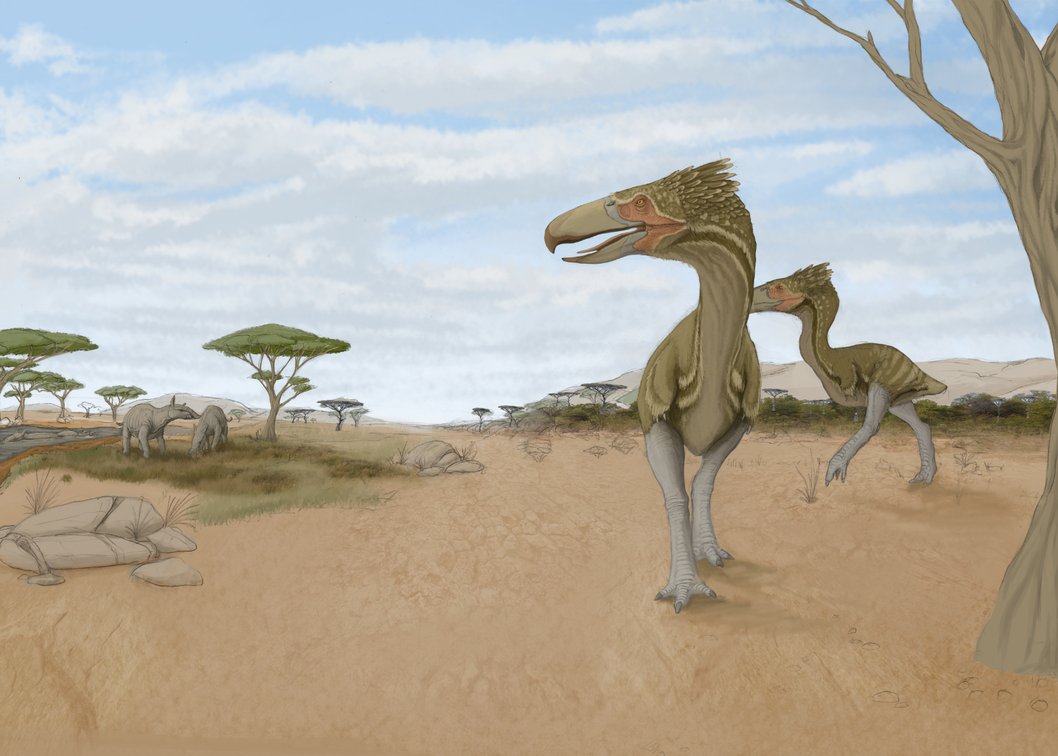
Kelenken guillermoi is a species of giant flightless predatory birds of the extinct family Phorusrhacidae, or "terror birds".
K. guillermoi lived in the Langhian stage of the Miocene, some 15 million years ago, in Argentina.
With a skull 71.6 cm (28.2 inches) long, it had the largest head of any known bird. It is the largest species of phorusrhacid. The tarsometatarsus is about 43.7 cm (17.2 inches) long.
Mosasaurus

Mosasaurus ("lizard of the Meuse River") is a genus of mosasaurs, carnivorous aquatic lizards. It existed during the Maastrichtian age of the late Cretaceous period, between about 70 and 66 million years ago, in western Europe and North America. The name means "Meuse lizard", as the first specimen was found near the Meuse River (Latin Mosa + Greek sauros lizard)..
Purussaurus
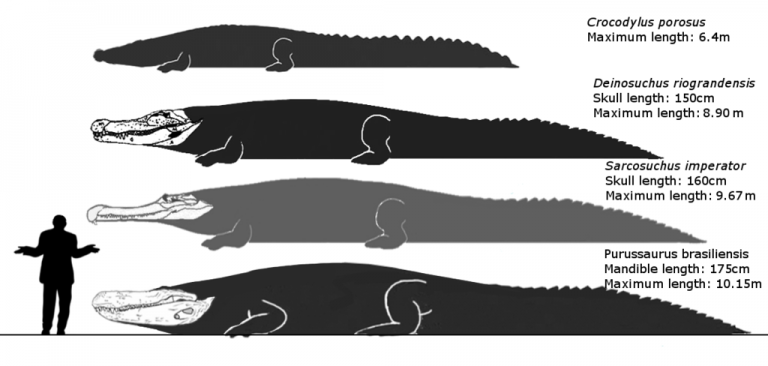
Purussaurus is a genus of giant caiman that lived in South America during the Miocene epoch, from the Colhuehuapian to the Montehermosan in the SALMA classification. It is known from skull material found in the Brazilian and Peruvian Amazon, Colombian Villavieja Formation, Panamanian Culebra Formation and the Urumaco and Socorro Formations of northern Venezuela.
Entelodon
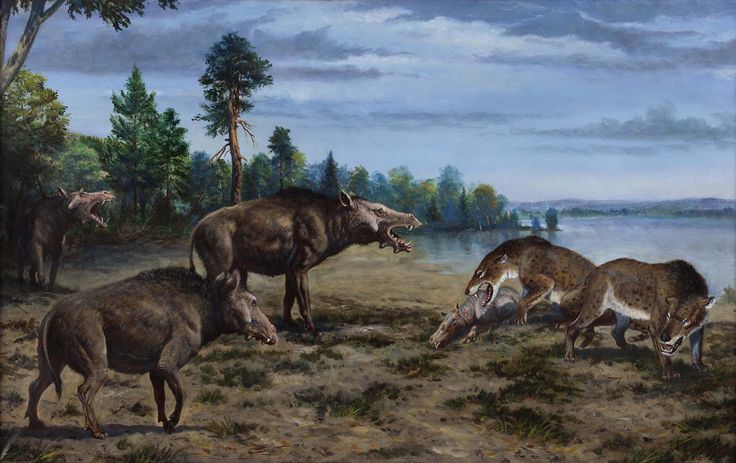
Entelodon is a genus of entelodont artiodactyl endemic to Eurasia. Fossils of species are found in Paleogene strata ranging in age from the Houldjinian (37.2–33.9 mya) until the Rupelian epoch of the early Oligocene (33.9–28.4 mya).
Azhdarchids
Azhdarchidae is a family of pterosaurs known primarily from the late Cretaceous Period, though an isolated vertebra apparently from an azhdarchid is known from the early Cretaceous as well (late Berriasian age, about 140 million years ago). Azhdarchids included some of the largest known flying animals of all time, but members no larger than a cat have also been found. Originally considered a sub-family of Pteranodontidae, Nesov (1984) named the azhdarchinae to include the pterosaurs Azhdarcho, Quetzalcoatlus, and "Titanopteryx" (now known as Arambourgiania). They were among the last known surviving members of the pterosaurs, and were a rather successful group with a worldwide distribution. By the time of the end-Cretaceous mass extinction, most pterosaur families except for the Azhdarchidae disappear from the fossil record, but recent studies indicate a wealth in pterosaurian faunas, including pteranodontids, nyctosaurids, tapejarids and several indeterminate forms. Some taxa like Navajodactylus, Bakonydraco and Montanazhdarcho were moved from Azhdarchidae to other clades.
Megalodon

Megalodon (Carcharocles megalodon), meaning "big tooth," is an extinct species of shark that lived approximately 23 to 2.6 million years ago (mya), during the Early Miocene to the end of the Pliocene. There had been some debate regarding the taxonomy of megalodon: some researchers argued that it was of the family Lamnidae and closely related to the great white shark (Carcharodon carcharias), while others argued that it belonged to the extinct family Otodontidae; presently, there is near unanimous consensus that the latter view is correct. Its genus placement is still debated, authors placing it in either Carcharocles, Megaselachus, Otodus, or Procarcharodon. The shark has made appearances in several media, such as the Discovery Channel's docufiction Megalodon: The Monster Shark Lives.
Titanoboa
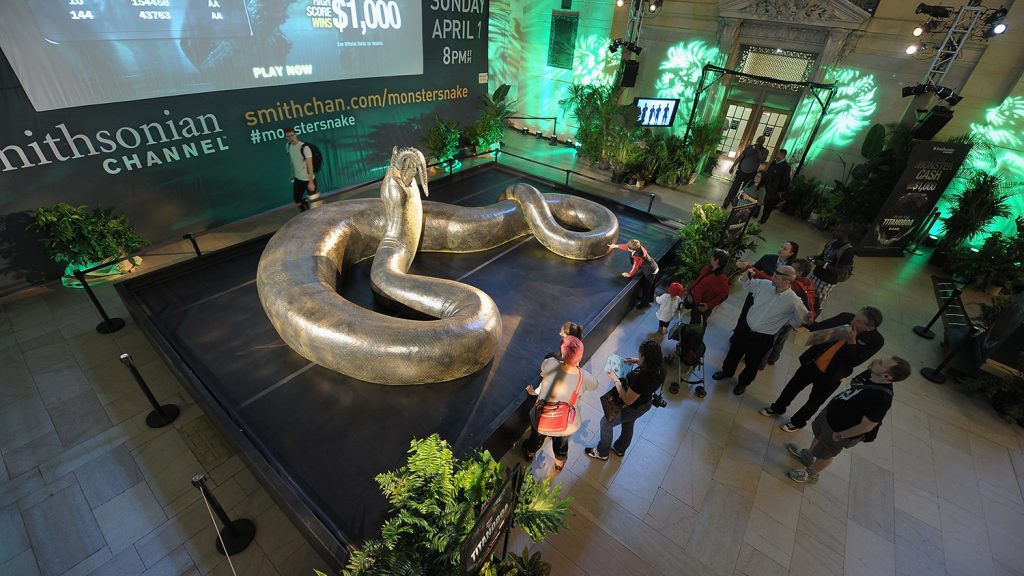
Titanoboa, meaning "titanic boa," is a genus of snakes that is known to have lived in present-day La Guajira in northern Colombia. Fossils of Titanoboa have been found in the Cerrejón Formation, and date to around 58 to 60 million years ago. The giant snake lived during the Middle to Late Paleocene epoch, a 10-million-year period immediately following the Cretaceous-Paleogene extinction event. The only known species is Titanoboa cerrejonensis, the largest snake ever discovered, which supplanted the previous record holder, Gigantophis.
Source: www.wikipedia.org / www.natgeo.com / www.history.com / www.smithsonian.com






